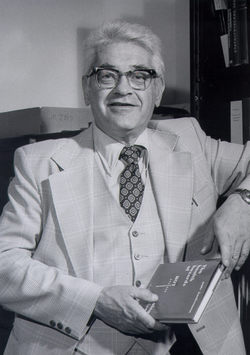(p. 1A) ORD, Neb. – Carl and Charlene Schauer were upset and more than a little offended when the City Council declared their 50-acre cornfield “blighted and substandard.”
Nothing is wrong with the cornfield, located almost five miles outside of town.
Nothing – except its proximity to the site of a proposed $75 million ethanol plant that local officials say will bring 34 jobs to the community of 2,300.
Invented to give cities the power to enlist private development in clearing slums, the “blighted and substandard” designation has become a critical tool for economic development projects across Nebraska.
It allows cities to use property taxes to help pay development costs on behalf of private enterprise, under a mechanism called tax increment financing. That allows increased property taxes generated by improvements of blighted property to be used to help fund the redevelopment.
Blighted land even can be condemned through eminent domain, then turned over to private developers. That practice was upheld by the U.S. Supreme Court last year.
Stunned by that ruling, several Nebraska lawmakers have introduced legislation to prevent local governments from using eminent domain to acquire private property that would be turned over to another private (p. 2A) owner for economic development.
Three bills (Legislative Bills 924, 910 and 799) specifically protect agricultural land, forbidding governments to declare it blighted. A fourth bill (LB 1252) would limit eminent domain to public projects like parks and roads.
And State Sen. Matt Connealy of Decatur proposes a constitutional amendment (LR 272 CA) to remove the requirement that land be designated as substandard and blighted before cities can use property taxes to help private developers pay project costs.
Connealy said it appears some smaller cities are pushing the boundaries of the blight definition.
The Ord ethanol project has been touted by Gov. Dave Heineman, the New York Times and others as an example of small-town hustle and progress.
Carl Schauer’s son, Curt, and his wife, Susan, however, have gone to court to try to stop it.
They live directly across Nebraska Highway 11 from Carl Schauer’s cornfield. Although not included in the proposed ethanol site, their home is less than 1,000 feet from where the plant would be built. They are worried about noise, smell, traffic and health hazards from the around-the-clock operation.
“I guess we’re the sacrificial lambs in the name of economic development,” said Susan Schauer, a licensed practical nurse.
A local official said the city does not want to take even the smallest part of Curt Schauer’s property if he doesn’t want to sell it.
“I don’t think anybody in this community would ever do that,” said Bethanne Kunz of the Valley County Economic Development Board.
After Schauer rejected an offer to buy a strip of his land for a railcar loading area, Kunz said, the ethanol site was reconfigured to leave out Schauer’s property. The field was annexed by the city as part of a redevelopment zone under a Nebraska law that allows small towns and villages to acquire outlying land through “remote annexation.”
The Schauer family still doesn’t know why the field was declared blighted – and it’s worried that the designation could spell trouble. Could their land be taken if another new factory wanted to locate in the area?
“I think it’s wrong that government can take private property and turn it over to private enterprise,” said State Sen. Tom Baker of Trenton.
Government already offers plenty of help – including grants and tax breaks – to business to encourage development, said State Sen. Deb Fischer of Valentine. “Does government have to give away the farm, too?”
Read the full story at:
REED, LESLIE. “‘Blight’ label raises concerns.” Omaha World-Herald (Sunrise Edition, Saturday, January 21, 2006): A1 & A2.


 Image source:
Image source: 
 Image source: web version of WSJ article quoted and cited below.
Image source: web version of WSJ article quoted and cited below.  Asian lady beetles (Photo source: online version of article cited below, downloaded from: http://www.nytimes.com/2005/11/15/national/15bugs.html?pagewanted=1)
Asian lady beetles (Photo source: online version of article cited below, downloaded from: http://www.nytimes.com/2005/11/15/national/15bugs.html?pagewanted=1)